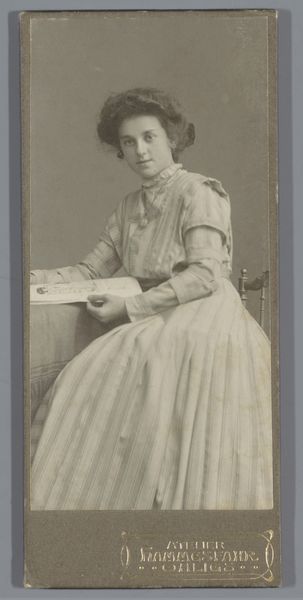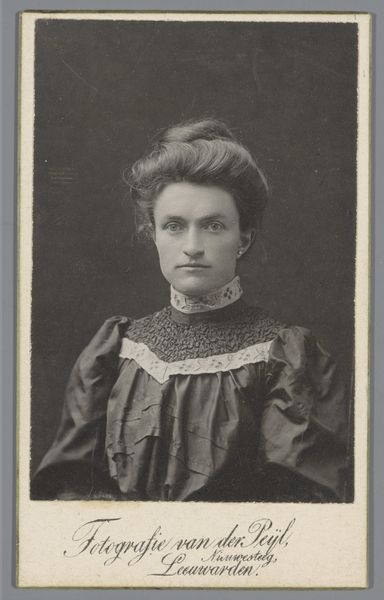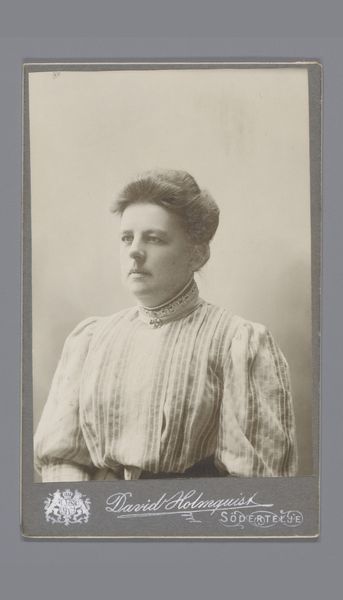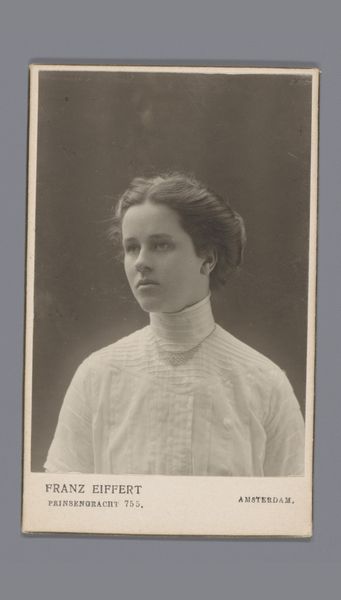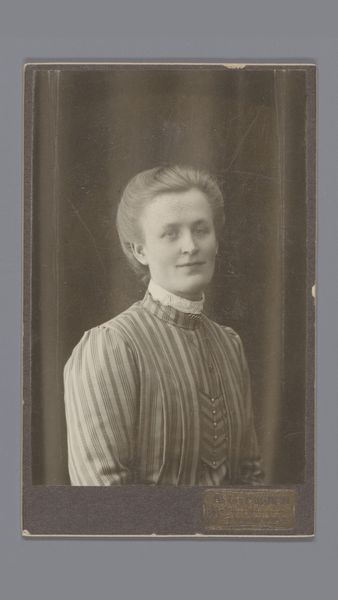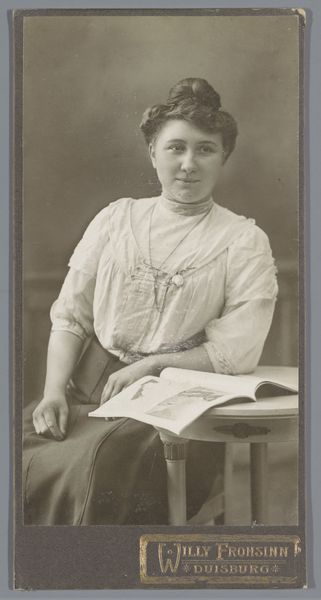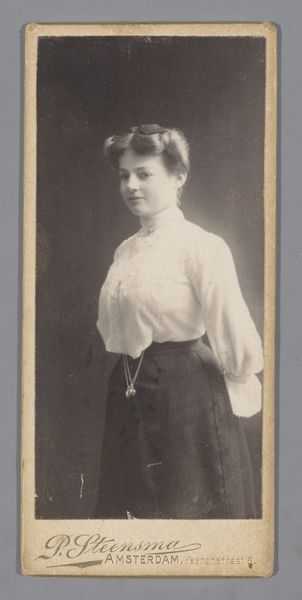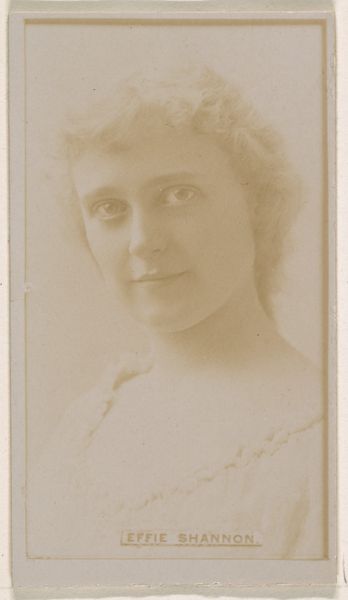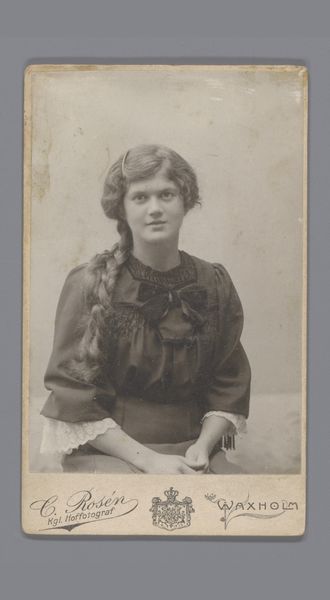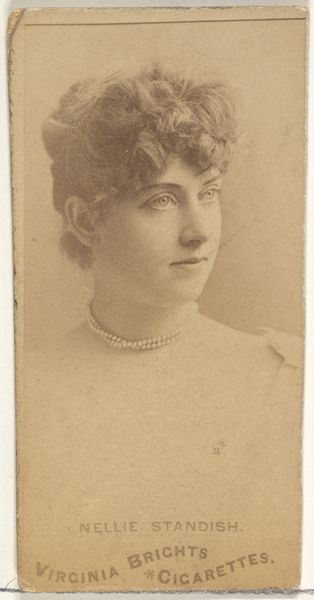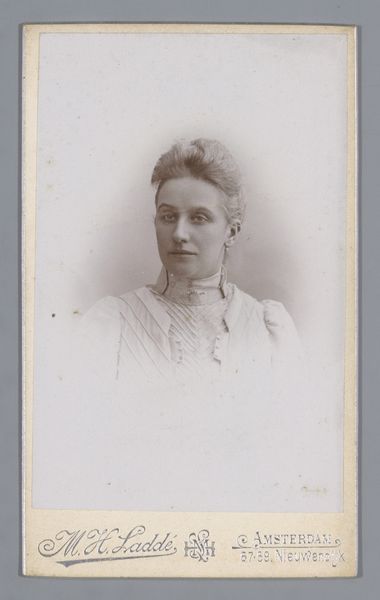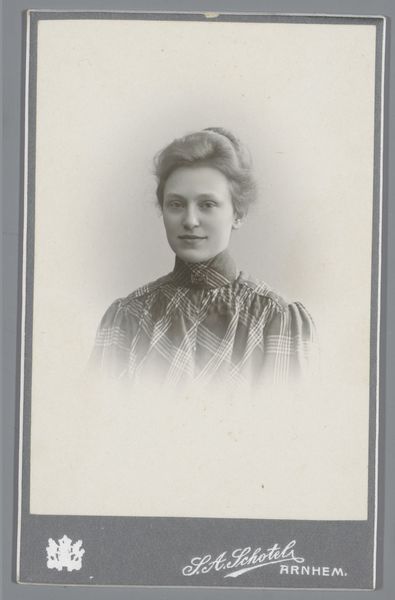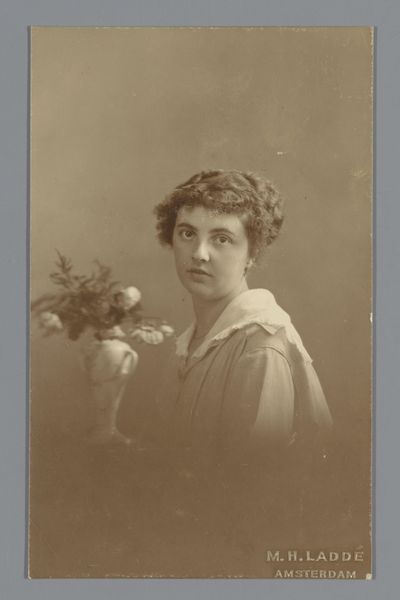
photography, gelatin-silver-print
#
portrait
#
portrait image
#
photography
#
historical photography
#
intimism
#
gelatin-silver-print
#
19th century
#
genre-painting
#
academic-art
#
realism
#
poster
Dimensions: height 90 mm, width 59 mm, height 104 mm, width 63 mm
Copyright: Rijks Museum: Open Domain
Editor: This gelatin silver print, "Studioportret jongedame lezend in stoel" by Cornelis Leenheer Sr., is from somewhere between 1880 and 1920. I’m struck by the subject's gaze – she looks directly at the viewer, almost challenging us, despite being captured in such an intimate act of reading. What do you see in this piece? Curator: I see a carefully constructed image that speaks volumes about the societal expectations and quiet rebellions of women during that era. The "intimist" theme highlights domesticity, but her direct gaze disrupts the passive role often assigned to women. It urges us to consider: What does it mean for a woman to be seen reading during this period? Is she gaining knowledge and power, challenging the status quo through literacy? Editor: That's fascinating. I hadn’t considered it as a potential act of rebellion. I was more focused on the sort of cozy, genre-painting aspect. Curator: Exactly! And the photography itself plays a role. Its accessibility, compared to painted portraits, suggests a democratization of representation. It allows for a broader segment of society, including women, to be visually documented. Who gets to control the narrative, the "poster", and what does it say? Consider also that this work is situated between academic art and realism. Do you think that impacts its approach to social commentary? Editor: I guess so! Thinking about this in terms of access and who is represented certainly opens it up. Curator: Indeed. So much of art history silences those who lived during this time. When we analyze the composition and setting alongside socio-historical narratives of class and gender, it becomes clear just how potent an image can be. Editor: I've learned to consider a portrait as a visual artifact shaped by forces extending far beyond just aesthetics! Curator: Precisely. Always remember to consider who's behind and in front of the camera.
Comments
No comments
Be the first to comment and join the conversation on the ultimate creative platform.
